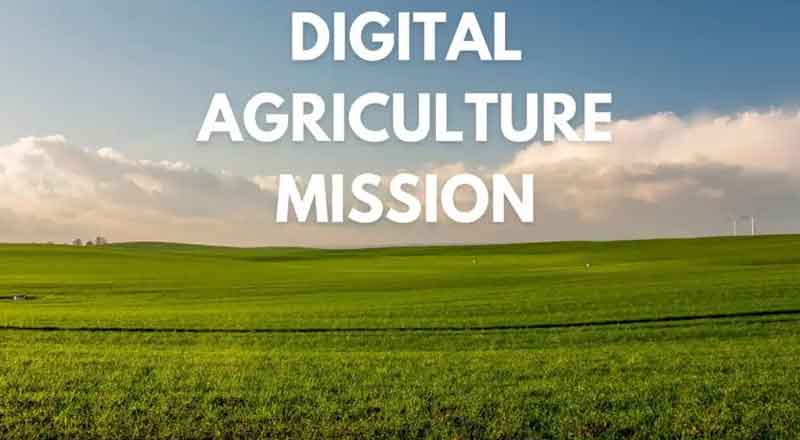India’s digital transformation, which has already revolutionized sectors like finance, healthcare, and education, is now set to make a significant impact on agriculture. The Union Cabinet Committee, chaired by Prime Minister Narendra Modi, has approved the ambitious Digital Agriculture Mission with a substantial financial allocation of ₹2,817 crore, including a central government share of ₹1,940 crore.
The Digital Agriculture Mission aims to revolutionize the agriculture sector through a comprehensive digital framework, supporting various initiatives under a unified scheme. This includes the development of Digital Public Infrastructure (DPI), implementation of the Digital General Crop Estimation Survey (DGCES), and support for IT initiatives by central and state governments, as well as academic and research institutions.
Key Pillars of the Mission:
- AgriStack: This farmer-centric Digital Public Infrastructure will streamline services and delivery to farmers through three main components:
- Farmers’ Registry: A comprehensive database of farmers.
- Geo-referenced Village Maps: Detailed maps for accurate agricultural planning.
- Crop Sown Registry: Tracking of crops planted across regions.
A standout feature of AgriStack is the ‘Farmer ID’, akin to the Aadhaar card, which will provide a secure digital identity for farmers. This ID will be linked to essential data such as land records, livestock ownership, crops sown, and benefits received.
- Krishi Decision Support System: This system will enhance decision-making for farmers by integrating various data sources and providing actionable insights.
- Soil Profile Mapping: To help farmers understand soil health and optimize farming practices.
The mission also includes the Digital General Crop Estimation Survey (DGCES), which will use advanced technologies for precise yield estimation through crop-cutting experiments, improving the accuracy of agricultural production data.
Implementation and Impact:
The rollout of the Digital Agriculture Mission is progressing with the active involvement of state governments. As of now, 19 states have signed MoUs with the Ministry of Agriculture, and pilot projects are underway in six states—Uttar Pradesh (Farrukhabad), Gujarat (Gandhinagar), Maharashtra (Beed), Haryana (Yamuna Nagar), Punjab (Fatehgarh Sahib), and Tamil Nadu (Virudhnagar).
The mission is expected to create substantial employment opportunities, with around 2,50,000 trained local youth and Krishi Sakhis (agricultural assistants) benefiting directly and indirectly from the initiative.
By leveraging cutting-edge technologies such as data analytics, artificial intelligence, and remote sensing, the Digital Agriculture Mission will enhance service delivery for farmers. It aims to provide streamlined access to government schemes, crop loans, and real-time advisories, thus empowering farmers and fostering agricultural growth in India.
The Digital Agriculture Mission represents a significant step towards modernizing agriculture and supporting farmers, reinforcing India’s commitment to harnessing technology for transformative impact in all sectors.





